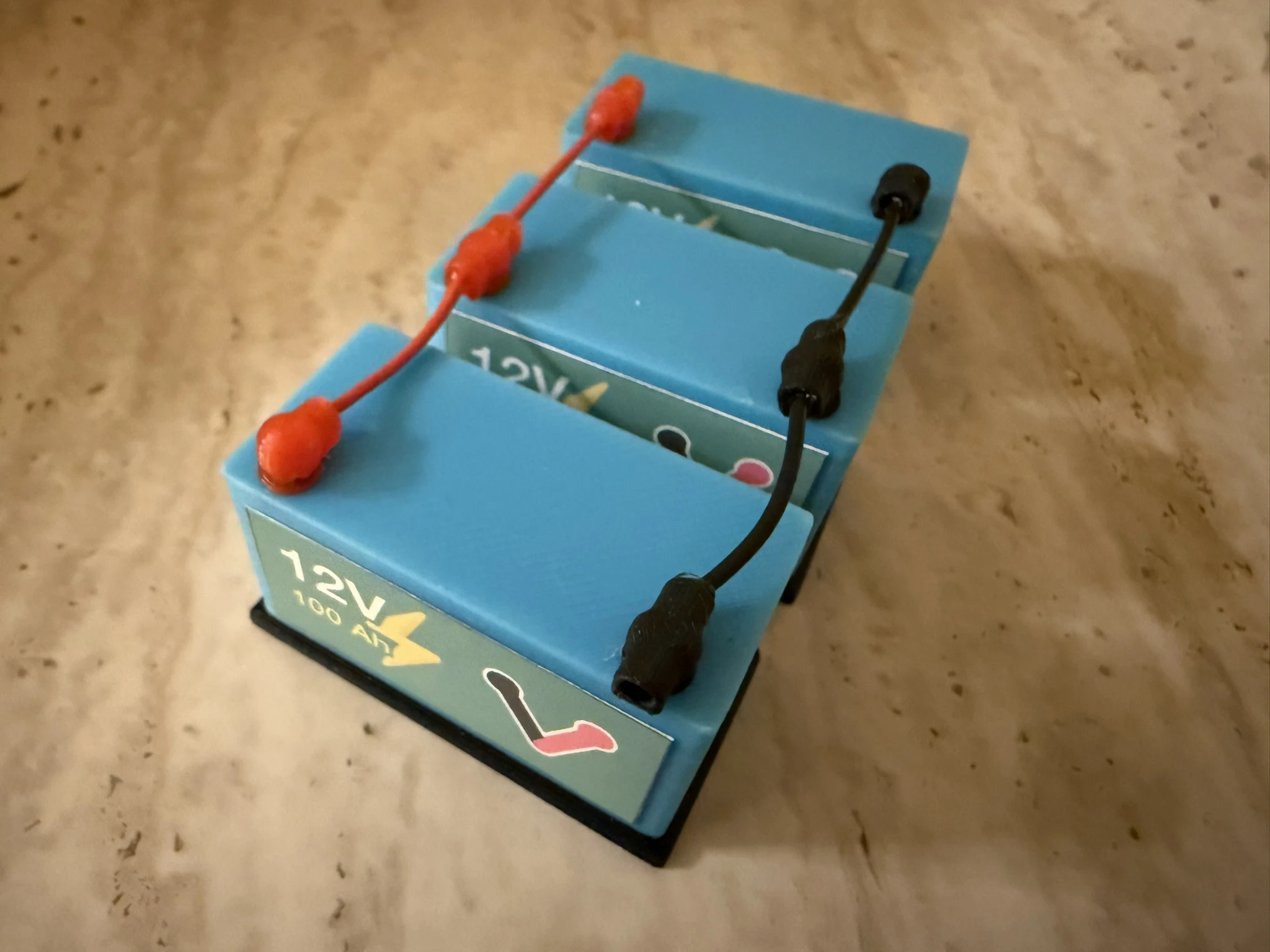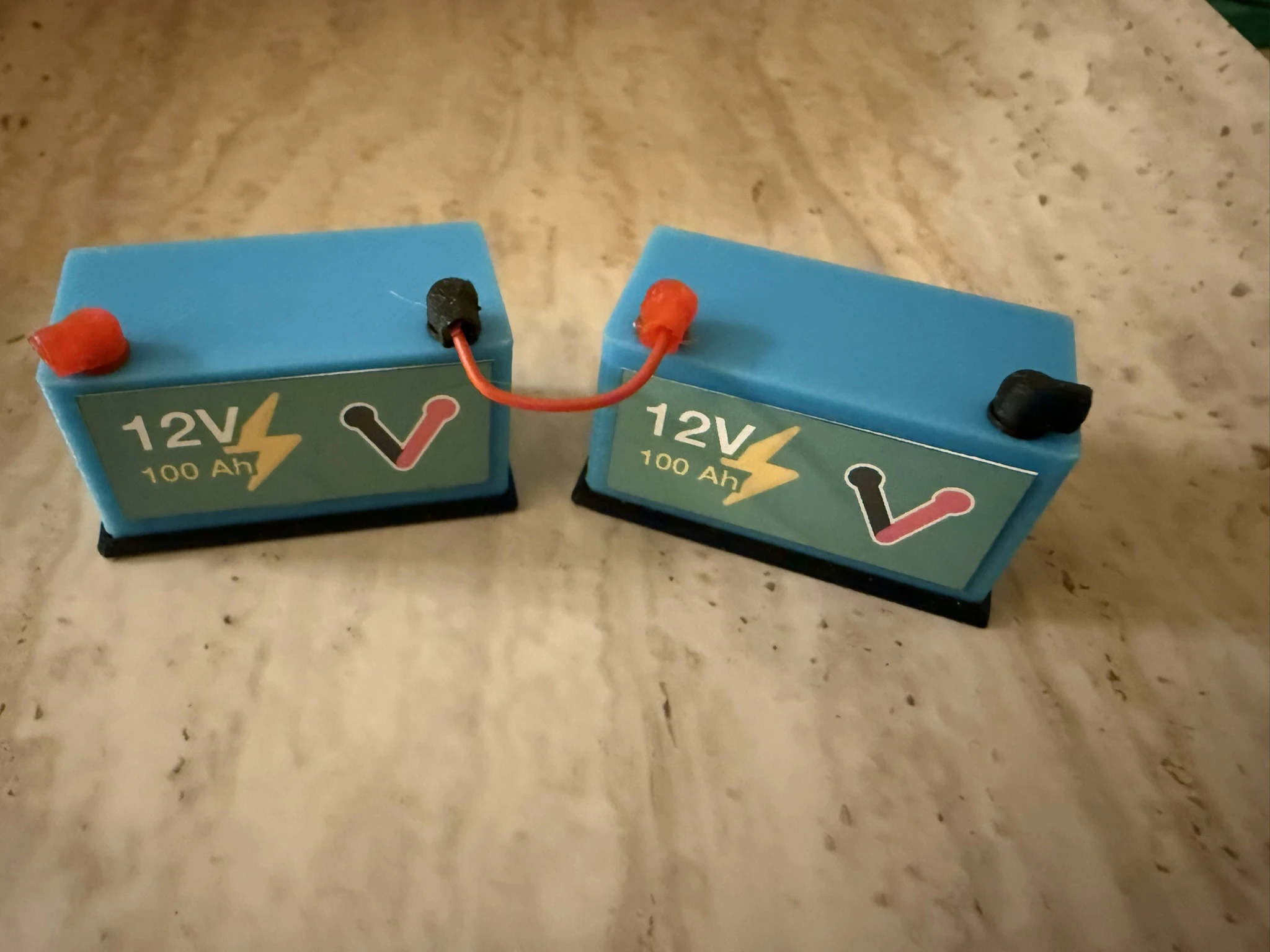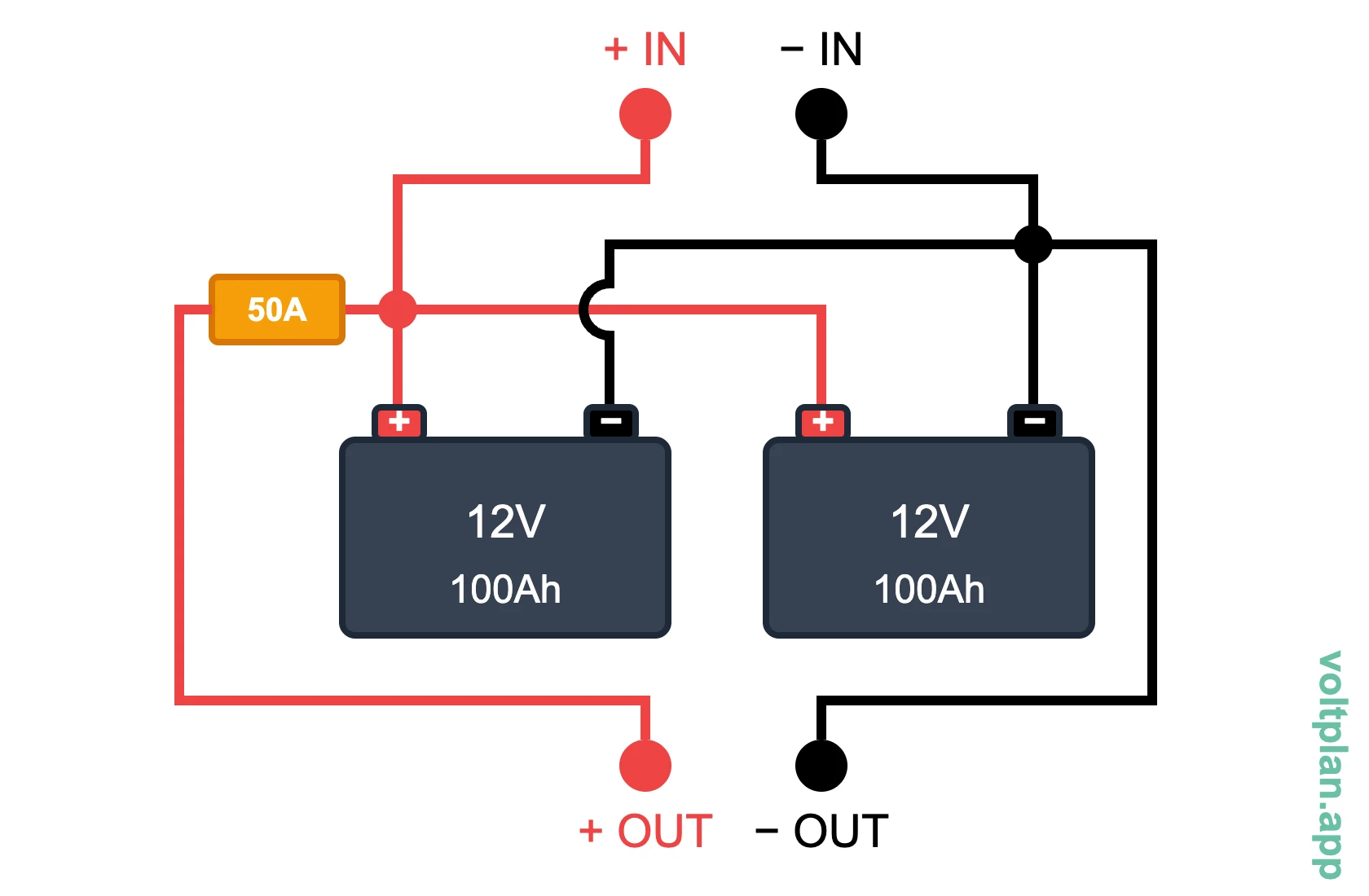Wiring 12V Batteries in Your Camper or Boat - Simple and Quick
Parallel or series? I wired my batteries wrong the first time and learned an expensive lesson. Here's the right way to connect multiple batteries - with diagrams that actually make sense.
When you're out on the water or parked at a remote campsite, your batteries are your lifeline. They power everything from lights to fridges to that essential morning coffee maker. But here's the thing: a single battery often isn't enough.
Quick answer: For 99% of camper and boat setups, you want parallel wiring (positive to positive, negative to negative). This keeps your system at 12V while doubling your capacity. Use identical batteries, same age, and 4/0 AWG cables for the connections. The diagonal method prevents uneven charging.
So you need more power. More amp hours. More reliability.
The solution? Multiple batteries. But now you're faced with a choice that can feel surprisingly complex: how do you wire them together?
The Two Ways to Connect Batteries (And Why It Matters)
When connecting multiple 12V batteries, you have exactly two options:
- Parallel: More capacity, same voltage
- Series: More voltage, same capacity
Most people in campers and boats want parallel. Here's why.
Parallel Wiring: The Amp Hour Multiplier

Parallel wiring is beautifully simple: positive to positive, negative to negative.
What you get:
- Voltage stays at 12V (perfect for your existing systems)
- Amp hours add up (two 100Ah batteries = 200Ah total)
- If one battery fails, the other keeps working
Think of it like adding a second fuel tank to your vehicle. You're not making the engine more powerful – you're just giving it more fuel to run longer.
Series Wiring: The Voltage Booster

Series wiring connects positive to negative between batteries, creating a chain. Should we have used a differently colored wire?
What you get:
- Voltage adds up (two 12V batteries = 24V total)
- Amp hours stay the same
- If one battery fails, the whole system stops
This is like stacking batteries in a flashlight. Each one adds more "push" but doesn't increase how long they'll last.
For 12V systems in campers and boats: Don't do this. Your 12V fridge won't appreciate 24V.
The Practical Reality: Why Parallel Usually Wins
Here's what most people actually need: More time off-grid. More hours of power. Same 12V systems they already have.
That means parallel.
But here's the catch: batteries in parallel need to be matched. Same type, same age, same capacity. Mix a new battery with an old one, and the old one will drag down the new one's performance.
The Right Way to Wire in Parallel

The amateur move: connecting your load to just one battery in the parallel setup.
The pro move: using equal-length cables from each battery to a common connection point.
Why? Current follows the path of least resistance. Unequal cable lengths create unequal resistance, meaning one battery works harder than the other. Over time, this kills batteries prematurely.
Battery Interconnect Cables: Size Matters
Those thick cables between your batteries? They're not overkill.
When batteries are wired in parallel, they share current – sometimes massive amounts during engine starting or inverter surge loads. Undersized interconnect cables create resistance, which means:
- Uneven charging (one battery gets more juice)
- Uneven discharging (one battery works harder)
- Heat buildup in the cables
For most parallel battery banks, use at least 2/0 AWG cables for interconnects. Yes, they're expensive. Yes, they're thick. But they ensure your batteries work as a team, not as competitors.

A beefy cables to connect batteries in parallel with a banana for scale
How Many Batteries Do You Actually Need?
Before you start wiring batteries together, step back and ask: do I have the right battery capacity for my needs?
Adding a second battery doubles your capacity, but only if you actually need it. Calculate your daily power consumption first. That 12V fridge pulling 5 amps for 50% duty cycle? That's 60Ah per day. LED lights, water pump, phone charging – it adds up fast.
This is where proper planning pays off. Tools like VoltPlan can help you match your battery bank to your actual loads, ensuring you're not overbuilding (heavy and expensive) or underbuilding (dead batteries by sunset). The same tool helps you size the right charger – because doubling your battery capacity without upgrading your charging system means twice as long to recharge.
Quick Math for Real-World Scenarios
Let's say you have two 100Ah batteries:
Parallel setup:
- Voltage: 12V
- Total capacity: 200Ah
- Usable power (at 50% discharge): 100Ah
- Runtime for 5A load: 20 hours
Series setup (don't do this for 12V systems):
- Voltage: 24V
- Total capacity: 100Ah
- Your 12V devices: Fried
The Safety Bits That Actually Matter
Parallel wiring is forgiving, but not foolproof:
-
Check voltages before connecting – This is critical. Connecting a fully charged battery (12.8V) to a depleted one (11.5V) causes massive current flow between them. Charge batteries individually to similar voltages before paralleling.
-
Match your batteries – Different types, ages, or capacities create imbalances. The weaker battery becomes a parasite, dragging down the good one and potentially overheating.
-
Use proper cable gauge – Undersized cables create resistance and heat. For battery interconnects carrying potentially hundreds of amps, this isn't just inefficient – it's a fire hazard.
Common Parallel Wiring Mistakes
The Daisy Chain: Connecting batteries in a line (pos to pos to pos) creates unequal cable lengths. The battery furthest from the load does the least work.
Mixed Battery Types: Combining a starting battery with a deep cycle? The starting battery will fail first, taking your whole bank down with it.
Oversized Fusing: Using a tiny fuse that trips under normal load, or worse, no fuse at all. Size your main fuse appropriately for your maximum expected load current.
Tiny Interconnects: Using the same gauge wire for battery interconnects as you'd use for a reading light. Those interconnects need to handle the combined current of all your loads.
When You Actually Need Series Wiring
The only time series makes sense in a 12V system: when you're using a DC-DC converter or inverter that needs 24V input for efficiency.
But that's advanced stuff. For 99% of camper and boat setups, parallel is the answer.
The Bottom Line
Want more amp hours for your 12V system? Wire in parallel.
- Same voltage
- More capacity
- Longer runtime
- Happy appliances
Just remember: matched batteries, equal cable lengths, proper fusing, and beefy interconnect cables.
It's not rocket science. But getting it right means the difference between reliable power and being stuck in the dark, wondering why your batteries died after just one season.
Ready to Design Your Electrical System?
Use VoltPlan's free electrical system designer to turn these concepts into reality.
Start Your Project